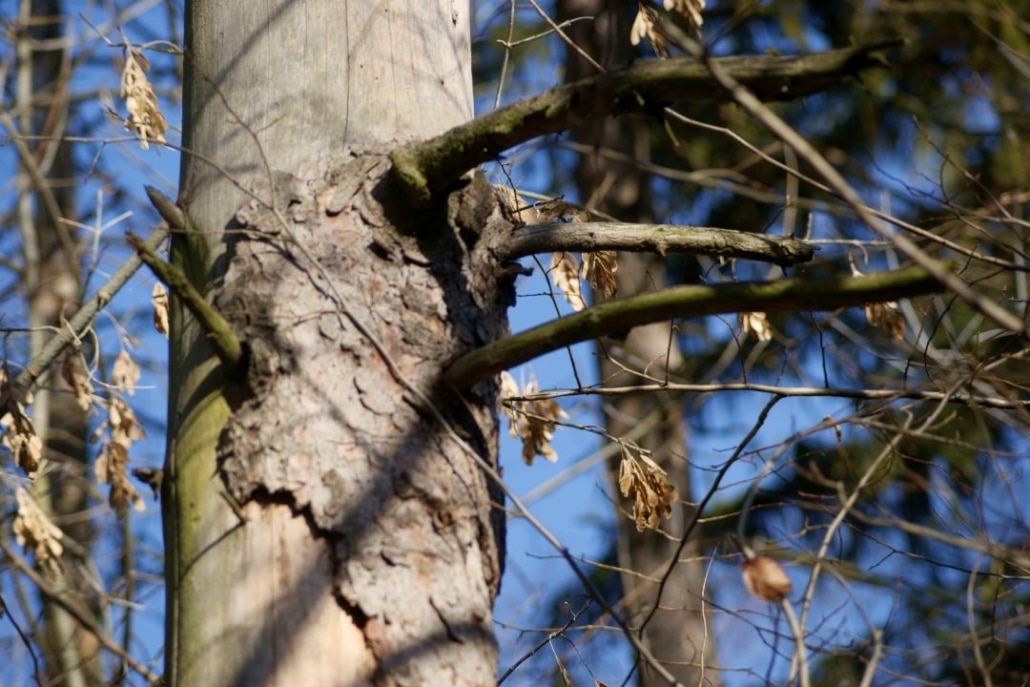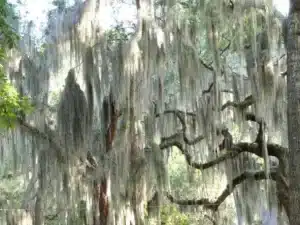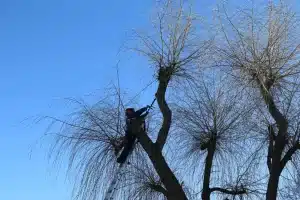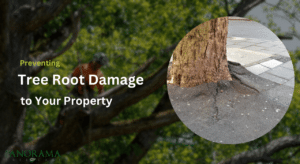For Florida homeowners, tree problems are more than just seasonal annoyances — they’re an ongoing challenge. From pests and fungal diseases to environmental stressors, these issues can severely impact tree health, safety, and longevity.
For support from a professional tree care in Tampa Bay team, proper diagnosis and treatment are essential for long-term health and safety.
This guide is authored by Tony Padgett, an ISA-Certified Arborist, licensed pesticide and fertilization specialist, and founder of Panorama Tree Care — a trusted name in Florida’s tree service industry for over 24+ years.
Ash Plant-bug:
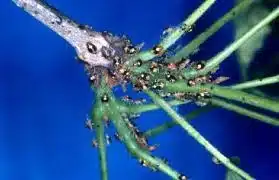
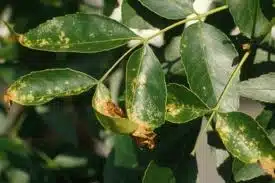
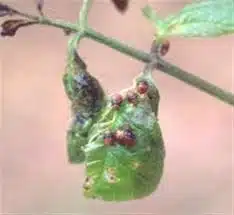
Tropidosteptes amoenus
Ash plantbug lays eggs in twigs and branches, then hatches causing infesta-tion to trees. Leaves become discolored first with white to yellow specs, then turning brown as leaves die. Early de-leafing of tree will occur and leaves will become deformed. Bugs feed on leaves.
| Time of Year | Affected Trees | Symptoms | Risk |
|---|---|---|---|
| May | Ash Tree | Brown spots on leaves | Moderate |
| July | Nearyby trees and shrubs | Yellow/white specs on leaves | |
| Deformed leaves | |||
| Early leaf dropping | |||
| Black spots underside of leaves | |||
| Red/black bugs in May |
Asian Cycad Scale:
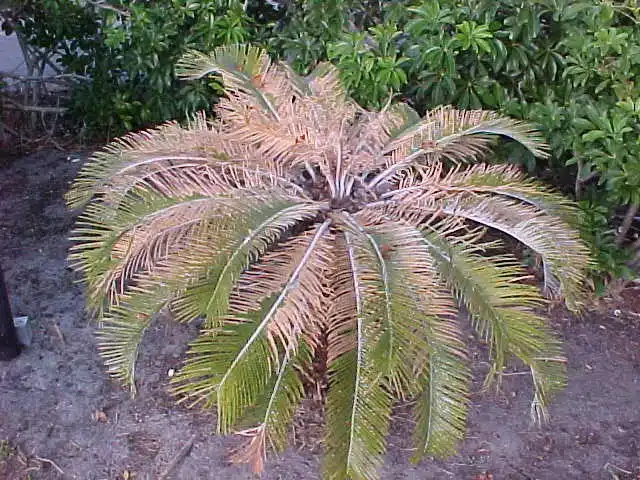
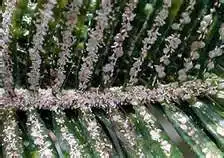
Aulacaspis yasumatsui
Originally found in Thailand and China, this pest has recently been introduced into Flori-da and infests Cycads and Palm species. Spread by wind from tree to tree, this pest will kill its host tree. White bugs that feed on leaves and attach themselves until death. They create a white protective film over themselves and build on top of themselves cre-ating the white scale. Death to host tree can occur in less than one year due to high in-festation of this pest and easy spreadability.
| Time of Year | Affected Trees | Symptoms | Risk |
|---|---|---|---|
| Spring | Cycads | Whitescales on leaves | Severe |
| Palms | Dead leaves | Fatal | |
| King Sagos | |||
| Queen sagos | |||
| Cardboard palms | |||
| Coonties |
Aphids:
Aphis spiraecola, Aphis gossypii, Toxoptera aurantii, Toxoptera citricida
With over 400 different species, Aphids are the most common tree and shrub pest in Florida. Aphids feed off of sap from new growth areas of trees and shrubs. Aphids ex-crete honeydew as a waste product, which is a sticky substance that gets all over every-thing from sidewalks to vehicles, and structures.
| Time of Year | Affected Trees | Symptoms | Risk |
|---|---|---|---|
| Spring | All trees and shrubs | Sticky plant | Moderate – most trees and shrubs |
| Fall | Curly leaves | ||
| Discolored leaves | High – pine & citrus trees | ||
| Black fungus |
These infestations can often be minimized with proper pruning and care from our expert tree trimming services in Tampa, especially for citrus and ornamental trees.
Apple Scab:
Venturia inaequalis
A fungal disease that causes direct loos of fruit and defoliation. Although not extremely harmful or fatal to trees, if not treated, defoliation will stunt tree growth and fruit yields. Leaf lesions are olive green to yellow in color. Fruit lesions are brownish and corky to the touch as fruit grows. Humidity and moisture can cause this fungus to spread rapid-ly.
| Time of Year | Affected Trees | Symptoms | Risk |
|---|---|---|---|
| Wet seasons | Fruit trees | Leaf spotting | Low-Moderate |
| Fruit spotting |
Bagworms:
hyridopteryx ephemeraeformis
A leaf feeding caterpillar that creates a silk “bag” out of silk and plant mate-rials. These pests grow up to one inch in length and carry around the bag on their backs until ready to lay eggs. Males fly off and infect surrounding trees, while females stay in same tree and cause further infestation and se-vere defoliation.
| Time of Year | Affected Trees | Symptoms | Risk |
|---|---|---|---|
| Spring | Evergreens, coni-fers, box elder | Cocoons/bags hanging from branches | Moderate |
| Summer | juniper, live oak, locust, maple, per-simmon | Defoliation | |
| pines, salt cedar, sumac, syc-amore, wild cherry, willow | |||
| ce-dar, cypress, elm, fruit and nut trees |
Bacterial Leaf Scorch:
Xylella Fastidiosa
Leafhopper insects carry and transmit this bacterium throughout the host tree. The bac-teria cause a disruption to the trees watering ability by clogging vital watering channels. Leaf scorching cause’s severe damage to the host tree making it unsafe and causing eventual death. Easily spread
| Time of Year | Affected Trees | Symptoms | Risk |
|---|---|---|---|
| Spring time | sweetgum, American elm | Browning of leaves | High |
| Before summer | sycamore, mulberry, red maple, sugar maple | Reddish or yellow bands separating live tissue from ne-crosis tissue. | fatal |
| Oaks: bur, pin, scar-let, red | Growth decline | ||
| laurel, wa-ter, turkey, bluejack | Branch death |
Calico Scale:
Eulecanium Cerasorum
A soft-scaled insect that has a black and white color in early life, and then loses their color in late life, turning dark brown. Insect invades trees with eggs in early Spring. Hatching begins in late Spring and by summer white Crawlers will appear and feed on leaves. The insect produces honeydew in the spring and causes leaves, bark, and branches to be sticky. Mold grows on the honeydew that is produced by the female insects. Crawlers will lay their eggs on the underside of leaves and then return to the woody parts of the tree.
| Time of Year | Affected Trees | Symptoms | Risk |
|---|---|---|---|
| Early Spring – lay eggs | Crabapple | Honeydew secretion (springtime) | Moderate |
| Late Spring -hatching | Dogwood | Mold (summer) | |
| Summer – infestation | Elm | Mold (summer) | |
| Star magnolia | Yellow leaves | ||
| Firethorn | Black and white scale on leaves | ||
| Maple | |||
| Sweetgum | |||
| Honeylocust | |||
| Stone fruit trees | |||
| Zelkova | |||
| Buckeye | |||
| Boston ivy | |||
| Tuliptree | |||
| Pyracantha |
Chlorosis
Iron deficiency that causes yellowing and scorching of leaves. Can affect tree in spots only, and not entire tree foliage. The yellowing of leaves is caused by a lack of chlorophyll and slows down the growth cycle of affected trees. Chlorophyll is responsible for the trees ability to pho-tosynthesize and turn sugars into energy. Trees will also produce bitter fruit that are smaller than normal and poor in quality. Iron deficiency can be caused by poor soil conditions such as lime content and high alkalinity. Cooler weather conditions, water saturation, and poor wind flow will intensify this condition and cause the tree to decline rapidly.
| Time of Year | Affected Trees | Symptoms | Risk |
|---|---|---|---|
| any | Maple | Yellow leaves | High |
| Pine | Small fruit | ||
| White Oaks | Bitter tasting fruit | ||
| Sweetgum | Stunted tree growth | ||
| Tuliptree | |||
| River Birch | |||
| Magnolia | |||
| White Pine | |||
| Bald Cypress |
Iron deficiency can often be corrected with proper tree fertilization and soil treatment.
Cottony Maple Scale:
Pulvinaria innumerabilis
A flat, dark brown soft scaled insect that lays a white egg sac on branches in spring. Larvae hatch by early summer and feed on leaves and leave veins on the underside of leaves. Honey-dew is produced by females leaving a sticky residue on leaves, branches, and surrounding areas. Mold grows on honeydew. Crawlers return back to woody parts of tree but continue to infest tree. Trees can have yellowing leaves, early defoliation, and branch dieback – stunting growth and lowering defenses from other diseases.
| Time of Year | Affected Trees | Symptoms | Risk |
|---|---|---|---|
| Spring | Maple | White sacs on branches | Moderate |
| Summer | Oak | Honeydew | |
| Elm | Gray/black Mold | ||
| Linden | Yellowing leaves | ||
| Honeylocust | Branch dieback | ||
| Dogwood | |||
| Boxelder | |||
| Alder | |||
| Hawthorn | |||
| Beech | |||
| Apple | |||
| Sycamore | |||
| Mulberry | |||
| Osage Orange | |||
| Poplar | |||
| Plum | |||
| Peach | |||
| Pear | |||
| Black locust | |||
| Willow | |||
| Linden |
Diplodia Shoot Blight:
Diplodia sapinea
| Time of Year | Affected Trees | Symptoms | Risk |
|---|---|---|---|
| March-October (spores disperse) | Most Pines | Short new shoots | High |
| Summer (disease is easily detectable) | Australian Pine | Brown brittle needles | Severe |
| Scot Pine | Lower branches turn brown | ||
| Ponderosa Pine | Resin droplets | ||
| Mugo Pine | |||
| Red Pine | |||
| Spruce |
Dutch Elm Disease:
Ophiostoma Novo-Ulmi
A fungal infection that disrupts the water cycle within the tree. Water carrying veins are clogged and water is not able to reach the crown of the tree, causing wilting and death. This fungus can be spread by the Elm Bark Beetle or similar pests. Fungus can also be spread through tree grafting. Leaves turn yellow and curl, eventually turning brown and dying. Inner bark (Sapwood) will turn brown to tan in color. A cross-section of the branches should reveal when disease started in tree.
| Time of Year | Affected Trees | Symptoms | Risk |
|---|---|---|---|
| Spring | All Elm species | Yellow leaves | High |
| July-September (growth season) | Sections of dead leaves | Fatal | |
| Dark branches and |
When pests or diseases leave a tree beyond saving, our professional tree removal service ensures safe and efficient removal.
Emerald Ash Borer:
Agrilus planipennis
Evasive Asian beetle that infests Ash trees by laying its larvae on the bark of the tree and hatch-lings tunnel and eat the tree from the inside-out. Sapwood is consumed and the water cycle of the tree is disrupted. Infested trees cannot get water up to the canopy, causing that portion of the tree to die, and possibly killing the entire tree. Difficult to detect early on as Ash trees do not give off strong indications of infestation. Emerald ash borers are a flat-head, metallic, green-iridescent beetle with a yellow-brownish abdomen. They create D-shaped holes in the trunk of Ash trees and are commonly hunted by woodpeckers. Hatching larvae are a white worm with a dark spine.
| Time of Year | Affected Trees | Symptoms | Risk |
|---|---|---|---|
| Summer – lay eggs | Ash | Green beetles in Summer | High |
| May/June – hatching | D-shaped holes in trunk | Fatal | |
| Fall | Woodpeckers pre-sent | ||
| New shoots from lower trunk | |||
| Leave discoloration |
Elm Leafminer:
Fenusa ulmi
Insect that feeds on the leaves of most Elm trees. Its larvae form tunnels on the leaves causing blotchiness and discoloration to the leaves. In summer the larvae drop to the ground where they burrow in the ground in brown-papery cocoons and await spring to hatch. New hatchlings have white and light brown colored heads. Mining of leaves shows most in May – leaves will appear brownish with some holes.
| Time of Year | Affected Trees | Symptoms | Risk |
|---|---|---|---|
| May-June (larvae feed on leaves) | Most Elms | Blotchy leaves | Low-moderate |
| Summer (cocoons) | Siberian Elm | Discolored leaves | |
| Spring – hatching | Russian elm | Cocoons on ground | |
| Slippery Elm | Holes in leaves | ||
| American Elm | |||
| English Elm |
European Elm Scale:
Gossyparia spuria
Insect with soft scales that produce honeydew as a byproduct, causing a sticky residue all over leaves, bark, branches, and the surrounding area. Mold will form over honey-dew. Eggs are laid at the end of spring and hatchlings come out in summer. Hatchlings feed on leaves, preferably the underside and then resort back to the woody parts of the tree in fall. Feeding stunts tree growth, causes dieback of branches, and leaves fall off sooner. Difficult to see as insect prefers high branches in tree.
| Time of Year | Affected Trees | Symptoms | Risk |
|---|---|---|---|
| Spring – mating | American Elm | Honeydew | Low |
| Summer – Hatching | Most Elms | Gray/black mold | |
| Hackberry | Thin crown | ||
| Zelkova | Stunted growth | ||
| Yellow leaves | |||
| Branch dieback |
Ficus Whitefly:
Singhiella simplex
Whiteflies start out as nymphs on the leaves of the Ficus tree and wonder until they lock onto a leaf and become immobile until adulthood. Whiteflies eat leaves, can cause wilting, yellowing leaves, stunt growth, cause early defoliation, and eventually kill the tree. Once an adult, the whitefly can travel to other trees and spread rapidly. Usually seem on the underside of leaves. They have 3 cycles per year. Swarm in white clouds of hundreds of flies to spread. Nymphs are transparent in color and difficult to detect early. Once swarming, the tree has been affected for several months. As they reach adulthood, the turn white with some yellow and red eyes.
| Time of Year | Affected Trees | Symptoms | Risk |
|---|---|---|---|
| All year | Ficus | Swarming white clouds | High |
| Weeping Fig | Leave yellowing | Fatal | |
| Strangler Fig | Wilting | ||
| Fiddler-leaf Fig | Branch dieback | ||
| Banana-leaf Fig | |||
| Banyan | |||
| False Banyan | |||
| Cuban Laurel |
Galls:
Abnormal growths caused by insects that carry fungus, bacteria, mite, fly, midge, moth, wasp, or beetle larvae. There are over 2000 different types of gall producing insects, with 1500 being either wasps or gnats. The insects lay eggs in the plant tissue and the larvae feed off of the in-side of the gall growth. Once they reach the adult stage, they exit the gall through a small hole, leaving behind the growth and a hole that damages the plant. Galls are most commonly found in the stems or leaves of their host plants, but are not limited to trunks, flowers, fruit, or roots.
| Time of Year | Affected Trees | Symptoms | Risk |
|---|---|---|---|
| Spring – hatching | Oaks | Abnormal growths | moderate |
| Summer – mating | Daisy | Insects emerging | |
| Rose |
Holly Leafminer:
Phytomyza ilicicola
A fly that lays its eggs in the leaf of the Holly tree and feeds on the leaves. Larvae feed between the upper and lower leaf surfaces leaving a tunnel in the leaves and damaging them. Females poke holes in the leaves, causing fluid to drip form the leaf. Leaves become distorted and disfigured by the holes and tunnels, and eventually stunt growth. Early defoliation can occur if tree is severely infested.
| Time of Year | Affected Trees | Symptoms | Risk |
|---|---|---|---|
| Early Spring | Most type of Holly | Holes in leaves | Moderate |
| American Holly | Tunnels/mines in leaves | ||
| English Holly | Disfigured leaves | ||
| Dune Holly | Early defoliation | ||
| Yaupon Holly | |||
| Deciduous Holly | |||
| Winterberry | |||
| Japanese Winterberry |
Honeylocust Plant Bug:
Diaphnocoris chlorionis
A light green to yellowish flying pest that feeds off of the new buds and leaves of the honey lo-cust plant. The pest injects a toxic saliva in to the leaves when they bite into the leave with their piercing-sucking mouthpart. This toxic saliva kills the surrounding leaf parts causing that area to turn yellow and die. Feeding can cause leaf rolling, disfigurement to the leaf, stunt growth, and/or Chlorosis. Infestation can weaken the tree and lead to a secondary pest infes-tation.
| Time of Year | Affected Trees | Symptoms | Risk |
|---|---|---|---|
| Spring | Honey locusts | Discolored leaves | Low |
| Fall | Black locusts | Leaf rolling | |
| Thinning canopy | |||
| Stunted growth |
Honeylocust Spider Mite:
Platytetranychus multidigituli
A mite that causes a bronzing of the Honey locust tree during the warm summer months. Trees that are stressed are most susceptible to this mite. Once mites hatch, they spread rapidly and feed on new growths, stunting the trees growth. Yellowing and whitish patches appear on the leaves of the tree and can turn brown and fall with heavy infestations. Mites are difficult to see with the naked eye, but can be found gathering on the underside of leaves.
| Time of Year | Affected Trees | Symptoms | Risk |
|---|---|---|---|
| Spring | Honey locust | Tree bronzing | Moderate |
| Summer | Black locust | Yellow leaves | |
| Early defoliation |
Laurel Wilt:
Raffaelea lauricola
A fungus disease of the Red Bay, Avocado, and other trees that stops the water flow within the host tree and causes the leaves to wilt and die. The disease is spread through the ambrosia beetle and can easily kill the host tree. Laurel wilt is spreading rapidly throughout Florida. Small white tubes extent from the bark of infected trees and bark will begin to fall off host trees.
| Time of Year | Affected Trees | Symptoms | Risk |
|---|---|---|---|
| All year | Red Bay | White tubes ex-tending from bark | Severe |
| Avocado | Bark that falls off | Fatal | |
| Camphor | Bark that falls off | ||
| Pondspice | Wiling tree | ||
| Pondberry | Beetle presence | ||
| Sassafras |
After removing infected trees, tree stump grinding helps prevent future infestations.
Lecanium Scale:
Soft-shelled scaled egg sacks that are semi-circle shaped. These insects hatch from the sacks and feed on the foliage of the host tree. Honeydew is produced as a by-product of these pests and will make the branches and leaves sticky. A black mold will grow over the honeydew and leaves will fall early. Ants, bees, and wasps are attracted to the honeydew and are a sign that the tree is infested.
| Time of Year | Affected Trees | Symptoms | Risk |
|---|---|---|---|
| Spring (hatching) | Most trees, especially: | Brown nodules on branch of tree | Moderate |
| Fall | Oaks | Honeydew/sticky resi-due | |
| Maples | Black mold | ||
| Birch | Early defoliation | ||
| Linden | Stunted growth | ||
| Elm | Ants, bees, or wasps | ||
| Hickory |
Magnolia Scale:
Neolecanium cornuparvum
An insect that removed fluids from its host tree by piercing holes in the plant. Females lay egg sacks on branches as white dome-shaped scales. Insect releases honeydew onto branches and leaves, which is sticky. Honeydew gets covered by a black mold on leaves and branches of host plant. Infestation leads to branch dieback, early defoliation of leaves, and eventually death to the plant.
| Time of Year | Affected Trees | Symptoms | Risk |
|---|---|---|---|
| Spring | Star Magnolia | Honeydew on branches and leaves | Severe |
| Summer | Saucer Magnolia | Black mold | Fatal |
| Fall | Lily Magnolia | White dome-shaped scales | |
| Cucumbertree Magno-lia | Gnats | ||
| Virginia Creeper | Ants, bees, wasps on plant | ||
| Tulip Tree | Dead branches | ||
| Daphne Spp. |
Hope you like our guide. If you ever need best tree service call panorama tree care services.
If you’re facing any of these issues, don’t wait — schedule your free estimate today and let our certified Tampa arborists inspect your trees.

